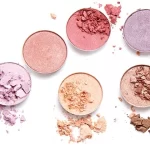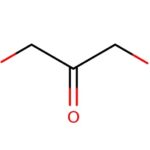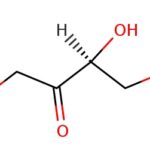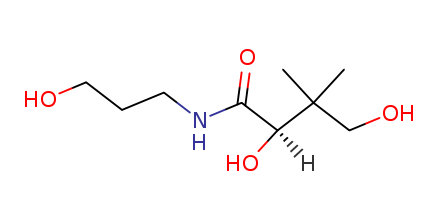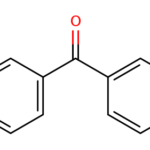Introduction
Octyl methoxycinnamate is an organic compound that acts as a sunscreen and lipstick component. It is an ester of methoxycinnamic acid and 2 – ethylhexanol (water-insoluble liquid). Mainly used in sun creams and other cosmetic products, it absorbs the sun’s ultraviolet B rays and protects the skin from damage. It is also used to reduce scarring.
Octyl methoxycinnamate is one of the most commonly used sunscreens in the world. It has an excellent ultraviolet light absorption curve of 280~310 nm, high absorption rate, good safety, minimal toxicity, and good solubility in oily raw materials. Therefore, it is widely used in daily chemical industry, plastics, rubber, coatings and other fields. As an oil soluble liquid UV-B absorber, it can be compounded with various sunscreens
Isooctyl p-methoxy Cinnamic acid can be used to prepare skin care cosmetics such as sunscreen (cream, milk, liquid), which can effectively absorb ultraviolet rays in the sun, prevent human skin from reddening, sunburn, and inking, and is also a therapeutic drug for photosensitive dermatitis. In industry, it can be used as anti-aging agent and ultraviolet absorber for plastics and inks.
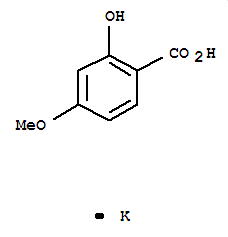
Uses
- Octyl methoxycinnamate is the most common ultraviolet B active component in sunscreen cream.
- Octyl methoxycinnamate can be combined with oxyphenone and titanium oxide.
- The aim of this study was to evaluate the efficacy of octyl methoxy cinnamic acid.
- This effect is more pronounced when using octyl methoxycinnamic acid prior to wound induction.
- The coloring groups such as C = C, C = O and O – N = O have free electrons excited by radiation.
Therefore, when the electronic energy level increases to the Excited state, Octyl methoxycinnamate can absorb radiation.
Synthesis
- Complex decomposition of olefins is widely studied.
- One of the synthetic routes of octyl methoxycinnamic acid is cross metathesis.
- Methoxy xinnamate was prepared by the reaction of 2-ethylhexyl acrylate as a raw material and by transesterification reaction of toluene methanol under nitrate catalyst.
Sunscreen mechanism
There is a conjugated large π bond in the molecule of Octyl methoxycinnamate. This conjugated structure can be seen as taking the benzene ring as the core, extending to include the oxygen atom in the substituent Methoxy group on one side, and extending to the double bond and ester group in the other substituent on the other side. This conjugated structure determines the substance’s ability to absorb ultraviolet rays. The experiment reveals that Octyl methoxycinnamate can absorb ultraviolet light in the wavelength range of 280-310nm, and the maximum absorption occurs at 311nm.
Safety studies
- The study in 2000 showed that the toxicity of octyl methoxycinnamic acid to mouse cells is lower than the typical use of sunscreen cream, and there is a growing concern about safety.
- However, another study has concluded that the skin permeation concentration of octyl methoxinsinic acid and other sunscreens is insufficient to produce significant toxicity to potential human keratinocytes.
- Estrogens and neuronal effects were observed in laboratory animals, and their concentrations were close to those of sunscreen users and were shown in vitro.
- Octyl methoxycinnamate is sensitive to light, and it has been demonstrated that UV absorption efficiency decreases when exposed to light.
This decomposition forms z-octyl ester from p-methoxy cinnamic acid e – octyl ester. - On the other hand, if the world trade organization is doing the long term, it will not deteriorate.
- A 2017 study by the University of Masaryk University of the Environmental Toxicology Center revealed that methoxymethoxycinnamate (ehmc) damaged human cell DNA.
- When exposed to sunlight, the spatial arrangement of the molecules changes and isomerizes.
- The researchers of the Masaryk University focused on the isomers and found that there were significant genotoxic effects in the laboratory conditions.
- Octyl methoxycinnamic acid destroys human DNA and causes genomic mutations and causes serious health risks.
- Octyl methoxycinnamic acid has been proven to produce a chlorine substituted intermediate in the cell containing the hypochlorite solution.
- Octyl methoxycinnamate octyl hydrochloride intermediate has weak induced denaturation for TA100 strains of Salmonella typhimurium.
- The reaction depends on the pH value, the component and the chlorine content.
Detailed Information
- Octyl methoxycinnamate is a sunscreen mainly used to protect the skin from ultraviolet rays.
- Octylmethoxycinnamate is one of the other safety tests performed by the US Food and Drug Administration (FDA).
- This experiment aims to better understand the systemic absorption, metabolism and elimination of small amounts of sun protection agents when they enter the human body through local application.
- It is important to know that the presence of octyl methoxycinnamate in the human body does not mean that your health is in danger.
- Further tests of octylmethoxycinnamate should confirm the safety of these ingredients.
- However, there are still concerns that sunscreens with mineral active ingredients (titanium dioxide and zinc oxide) may be selected from the new FDA requirements.
- After decades of research and extensive research, octylmethoxycinnamate has proven to be safe.
- There is no research suggesting that the drugs used in SPF products are harmful to the human body.
In the study that submitted the above statement, these conditions did not apply at all to the use of octyl methoxycinnamate in sunscreens. - The lauric acid component of this sunscreen component can cause allergies in some people. But this is a personal reaction, which means that your skin cannot withstand this ingredient.
- Octylmethoxycinnamate is not considered irritating or photosensitive to the general population.
- By preparing Octyl, the risk of allergic reactions can be minimized.
- Methoxy group Cinnamic acid Salt in the sun protection phase (non-aqueous phase).
- This also stabilized octylmethoxycinnamate, including further adjustment steps such as encapsulation and special emulsification processes.
If these measures are not taken, more than 60% of sunscreens lose the protection of the methoxy group cinnamic acid when exposed to ultraviolet light. - However, this problem is well known by sunscreen chemists, so today’s sunscreen cream with octyl methoxycinnamate is not a cause for concern.
- This common sunscreen ingredient has been shown to have similar hormonal effects on experimental animals. This chemical is present in humans, including breast milk samples.
- Octylmethoxycinnamate is one of the most common chemical ultraviolet protectants in the world, which is reported to cause light sensitivity and photosensitive effects.
- Octylmethoxycinnamate is easy to penetrate into the upper layer of the skin and produces free radicals in skin cells when exposed to ultraviolet light.
- Ethyl Methoxy Group Cinnamic Acid is a transparent liquid that is insoluble in water.
- Methoxy group ethyl Cinnamic acid hexylester is used in the formulation of various beauty products, including sunscreen and cosmetics, which on the market contain ingredients to protect the skin from the sun.
- Octylmethoxycinnamate is usually listed as octanoate in sunscreen products.
If you see these personal care products in the ingredient list of shampoo or other hair care products used to prevent UV degradation. - Long-term exposure to ultraviolet radiation can affect the health of the skin, eyes and immune system.
- Methoxy group Ethyl Cinnamic Acid Hexylester (Octylthion) helps prevent skin damage from sunlight and other ultraviolet rays by absorbing ultraviolet rays.
- The US Food and Drug Administration (FDA) has approved the review of methoxy group ethyl cinnamic acid as an over-the-counter sunscreen with a concentration of 7.5%.
- Some studies have shown that this component produces excessive reactive oxygen species that disrupts cell signaling, leads to mutations and possible cell death.
- This reaction may also be related to cardiovascular disease.
- However, another study concluded that the concentration of octylmethoxycinnamate and other sunscreens penetrating the skin is not sufficient to cause significant toxicity.
- Likewise, as consumers, we need to balance the benefits of ingredients with their harmful side effects.
- Octylmethoxycinnamate is a chemical sunscreen that can be absorbed
- Octyl methoxycinnamate can absorb UV-B rays from the sun but does not protect against UV-A rays.
- Octyl methoxycinnamate is the name given by the international cosmetic ingredient nomenclature (inci) and provides names to chemicals and other ingredients used in soap, cosmetics and related components.
- According to the United States, octyl methoxy cinnamic acid is called octanoic acid.
As consumer awareness of healthy skin increases, demand for skin care products increases during the forecast period and is expected to promote skin care products. This would stimulate the market demand of octyl methoxinsinamic acid. Skin care products are the largest subdivision market of the personal care industry. Skin care products include cream, hand & Body Lotion, sunscreen products, and facial care products. In addition, it is expected that the demand for octyl methoxycinnamic acid is stimulated in the next few years with the recognition of the emulsion and sunscreen. However, estrogen and other possible side effects of octyl methoxycinnamate cause safety problems, especially in children and pregnant women. In addition, octyl methoxycinnamate was absorbed through the skin, and some studies revealed that the octyl ester promoted the formation of potentially harmful radicals. This may be the main constraint of the octyl methoxy cinnamic acid market.
Related Products






